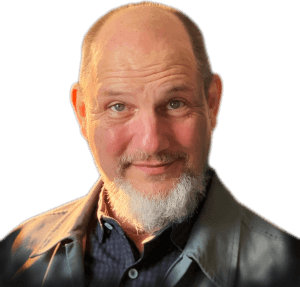
Looking Deeper
I sometimes comment in FB groups, offering my humble critique, when asked. Here’s what I offered for this drawing on the left.
Honestly, there is a huge difference between drawing and copying a photo. So much of what I see in this group is copying. Drawing involves a response, an interpretation; a drawing needs to be an expression of what we see. Otherwise, why bother? Just make a photocopy. My book gets into how to accurately and eloquently EXPRESS nature. There is nothing of the artist in a tired, beaten down copy of a bad photo. Although I admire the effort, your time would be better spend actually drawing.
I think the more time artists spend “fixing” their work, the greater the opportunity to ruin a good thing. Get in like a commando and get the heck out.
 The Power of Positive Painting is about analyzing the surfaces of forms and how they reflect and interact with light. In this sense, we do not look deeply into things (sorry, no mind reading), which might be beneath or behind forms, but only that which appears to us on the surface. We reveal the depths of things by carefully abstracting what is presented to the eye. Nothing escapes. All is expressed. That is how we capture the life, the expressions and the soul of our subject. One cannot draw such things. They must come in the back door while we are focused on connecting and expressing forms.
The Power of Positive Painting is about analyzing the surfaces of forms and how they reflect and interact with light. In this sense, we do not look deeply into things (sorry, no mind reading), which might be beneath or behind forms, but only that which appears to us on the surface. We reveal the depths of things by carefully abstracting what is presented to the eye. Nothing escapes. All is expressed. That is how we capture the life, the expressions and the soul of our subject. One cannot draw such things. They must come in the back door while we are focused on connecting and expressing forms.
One of the most challenging things for me as a teacher is having to convince students there is more to drawing than copying and more to painting than coloring. Come to think of it, saying there is less to drawing and painting, rather than more, would be more to the point. What we are trying to do is create value in something very personal and intimate, namely artistic expression. People find it difficult to separate the expressive nature of art from the technical or craft side. That’s where the book is really a giant sales pitch. I set out to convince students who struggle with realism that they really need to focus on abstract shapes and forms rather than things. This sounds counter intuitive. But it isn’t. As I say in the book, in a variety of ways, in order to get a likeness, we must give up trying to draw things like eyes and mouths. If your drawing isn’t “right” it isn’t because the mouth is “wrong” it is because the shapes and forms on your drawing do not accurately express the shapes and forms of your subject. Accuracy is not in the “thingness” but in the componant shapes and forms that add up to “mouth,” for example.
If it seems like I’m saying the same thing or using semantics, look at the work and see exactly what I am talking about. To be a good realist we must first be an excellent abstractionist. The Power of Positive Painting focuses on abstracting forms and distilling shapes into their essences. That way, we can express, respond to them, as abstract forms, instead of merely copying a photo. The viewers eye fills in any missing information. And the best part is we leave a bit of ourselves behind on the paper or the painted surface. It is your interpretation of these abstract forms and shapes that makes your work unique. On the right and on the cover of this BLOG are examples of what I mean by an expressive drawing. They are accurate yet full of life. They reflect my inner life, my point of view. They appear detailed, almost photographic. But in reality they are just a bunch of very specific abstractions. Focusing on these abstractions is what gives our work depth and meaning. But don’t take my word for it. For even better examples, check out the drawings of Da Vinci. Always go to the masters. There you sill see what I’m talking about. That is where I will always direct you in my book. This, and so much more, will make sense when you read the book.

 Would you like 20% Off any product or service on ManiscalcoGallery.com?
Would you like 20% Off any product or service on ManiscalcoGallery.com?